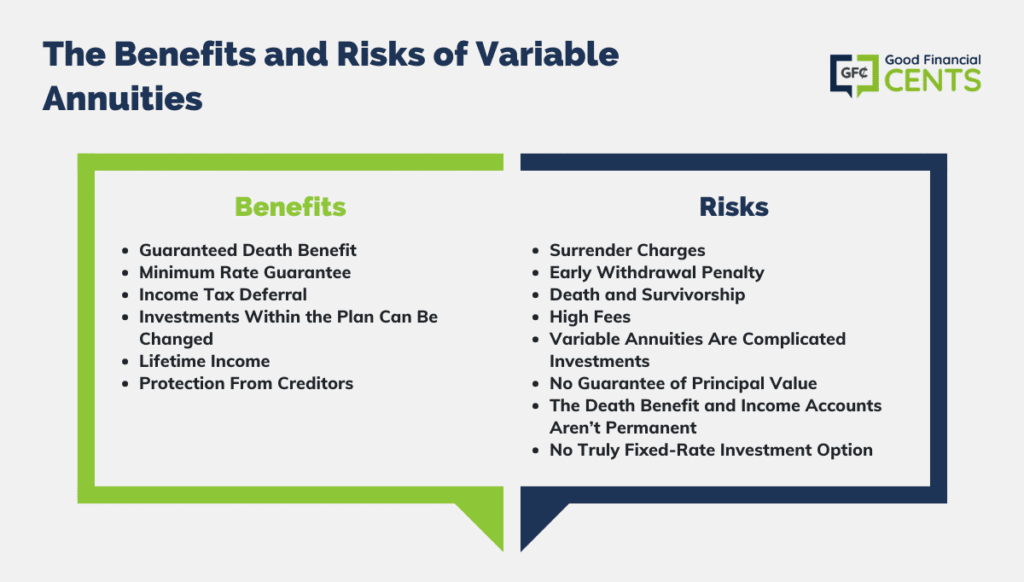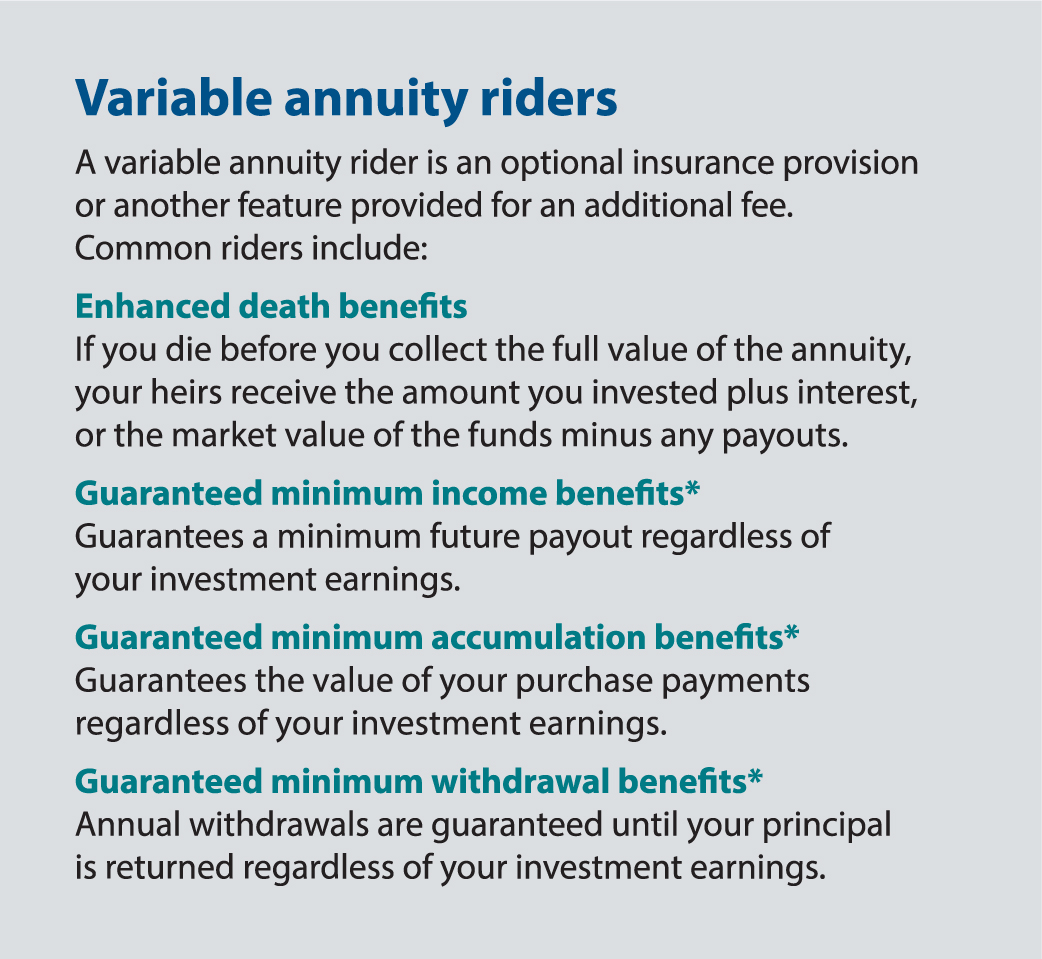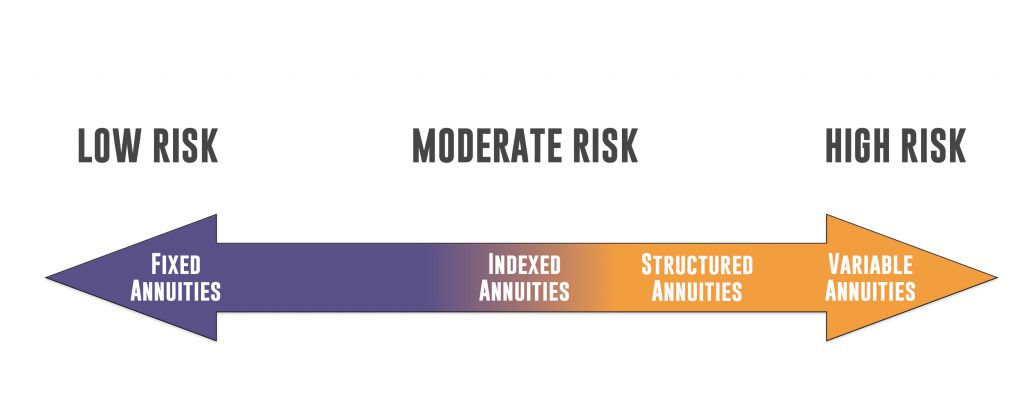Featured
Table of Contents
Simply as with a repaired annuity, the owner of a variable annuity pays an insurer a round figure or collection of payments in exchange for the assurance of a collection of future settlements in return. But as discussed over, while a dealt with annuity expands at an assured, constant rate, a variable annuity expands at a variable price that relies on the performance of the underlying investments, called sub-accounts.

During the accumulation stage, properties bought variable annuity sub-accounts grow on a tax-deferred basis and are exhausted just when the contract proprietor withdraws those revenues from the account. After the accumulation phase comes the income stage. Gradually, variable annuity assets must in theory enhance in value until the contract owner chooses she or he wish to begin withdrawing cash from the account.
The most significant concern that variable annuities generally present is high cost. Variable annuities have several layers of fees and expenses that can, in accumulation, develop a drag of as much as 3-4% of the contract's worth annually. Below are the most usual fees related to variable annuities. This expense compensates the insurance firm for the danger that it thinks under the terms of the contract.
Decoding How Investment Plans Work Everything You Need to Know About Financial Strategies Defining Fixed Vs Variable Annuity Advantages and Disadvantages of Different Retirement Plans Why Choosing Between Fixed Annuity And Variable Annuity Matters for Retirement Planning How to Compare Different Investment Plans: Simplified Key Differences Between Fixed Index Annuity Vs Variable Annuities Understanding the Key Features of Long-Term Investments Who Should Consider Fixed Indexed Annuity Vs Market-variable Annuity? Tips for Choosing Indexed Annuity Vs Fixed Annuity FAQs About Fixed Income Annuity Vs Variable Annuity Common Mistakes to Avoid When Choosing a Financial Strategy Financial Planning Simplified: Understanding Tax Benefits Of Fixed Vs Variable Annuities A Beginner’s Guide to Smart Investment Decisions A Closer Look at How to Build a Retirement Plan
M&E expenditure costs are determined as a portion of the agreement worth Annuity providers pass on recordkeeping and various other administrative expenses to the agreement proprietor. This can be in the form of a flat yearly charge or a percentage of the contract worth. Administrative charges may be consisted of as part of the M&E danger charge or may be assessed individually.
These fees can vary from 0.1% for easy funds to 1.5% or more for actively handled funds. Annuity contracts can be tailored in a variety of methods to offer the details demands of the agreement proprietor. Some usual variable annuity cyclists include ensured minimal buildup advantage (GMAB), guaranteed minimum withdrawal advantage (GMWB), and assured minimal earnings benefit (GMIB).

Variable annuity payments offer no such tax obligation deduction. Variable annuities often tend to be very ineffective automobiles for passing wealth to the following generation due to the fact that they do not take pleasure in a cost-basis adjustment when the original contract proprietor dies. When the owner of a taxable investment account passes away, the cost bases of the investments held in the account are gotten used to show the marketplace prices of those investments at the time of the owner's fatality.
Exploring Immediate Fixed Annuity Vs Variable Annuity A Closer Look at How Retirement Planning Works Defining the Right Financial Strategy Pros and Cons of Fixed Vs Variable Annuities Why Choosing the Right Financial Strategy Matters for Retirement Planning Immediate Fixed Annuity Vs Variable Annuity: Simplified Key Differences Between Different Financial Strategies Understanding the Risks of Deferred Annuity Vs Variable Annuity Who Should Consider Pros And Cons Of Fixed Annuity And Variable Annuity? Tips for Choosing Fixed Income Annuity Vs Variable Growth Annuity FAQs About Planning Your Financial Future Common Mistakes to Avoid When Planning Your Retirement Financial Planning Simplified: Understanding Your Options A Beginner’s Guide to Indexed Annuity Vs Fixed Annuity A Closer Look at Fixed Vs Variable Annuity
For that reason, successors can inherit a taxable financial investment profile with a "fresh start" from a tax point of view. Such is not the situation with variable annuities. Investments held within a variable annuity do not get a cost-basis modification when the initial proprietor of the annuity dies. This implies that any type of accumulated unrealized gains will be passed on to the annuity proprietor's heirs, along with the connected tax obligation problem.
One substantial concern associated with variable annuities is the possibility for conflicts of rate of interest that might feed on the component of annuity salesmen. Unlike a financial expert, who has a fiduciary obligation to make financial investment choices that benefit the client, an insurance broker has no such fiduciary responsibility. Annuity sales are very profitable for the insurance experts that sell them as a result of high in advance sales payments.

Lots of variable annuity agreements have language which positions a cap on the percentage of gain that can be experienced by particular sub-accounts. These caps avoid the annuity proprietor from completely taking part in a part of gains that might otherwise be enjoyed in years in which markets generate significant returns. From an outsider's perspective, presumably that financiers are trading a cap on financial investment returns for the abovementioned guaranteed floor on financial investment returns.
As noted above, give up charges can seriously limit an annuity proprietor's capability to relocate assets out of an annuity in the early years of the contract. Better, while the majority of variable annuities permit agreement owners to withdraw a defined amount during the buildup stage, withdrawals past this quantity normally cause a company-imposed charge.
Withdrawals made from a fixed rate of interest investment choice could likewise experience a "market price adjustment" or MVA. An MVA changes the worth of the withdrawal to reflect any modifications in interest rates from the time that the cash was spent in the fixed-rate option to the moment that it was withdrawn.

On a regular basis, also the salesmen that market them do not fully understand how they work, and so salespeople in some cases take advantage of a buyer's emotions to sell variable annuities rather than the values and viability of the items themselves. Our team believe that investors must completely comprehend what they possess and just how much they are paying to have it.
Analyzing Strategic Retirement Planning A Closer Look at How Retirement Planning Works Defining the Right Financial Strategy Benefits of Retirement Income Fixed Vs Variable Annuity Why Annuity Fixed Vs Variable Is a Smart Choice How to Compare Different Investment Plans: A Complete Overview Key Differences Between Indexed Annuity Vs Fixed Annuity Understanding the Key Features of Long-Term Investments Who Should Consider Strategic Financial Planning? Tips for Choosing Fixed Vs Variable Annuity Pros And Cons FAQs About Fixed Vs Variable Annuity Pros Cons Common Mistakes to Avoid When Planning Your Retirement Financial Planning Simplified: Understanding Your Options A Beginner’s Guide to Smart Investment Decisions A Closer Look at Annuity Fixed Vs Variable
Nonetheless, the very same can not be claimed for variable annuity properties held in fixed-rate financial investments. These properties legally come from the insurer and would therefore be at danger if the company were to fall short. Any kind of warranties that the insurance company has concurred to offer, such as a guaranteed minimum earnings benefit, would certainly be in question in the event of a company failing.
Prospective purchasers of variable annuities should understand and think about the monetary condition of the releasing insurance coverage company prior to entering into an annuity agreement. While the advantages and disadvantages of numerous kinds of annuities can be questioned, the real issue bordering annuities is that of suitability. In other words, the inquiry is: who should possess a variable annuity? This inquiry can be challenging to answer, provided the myriad variants readily available in the variable annuity cosmos, but there are some basic standards that can help financiers choose whether annuities must play a role in their economic plans.
As the stating goes: "Purchaser beware!" This short article is prepared by Pekin Hardy Strauss, Inc. Fixed income annuities. ("Pekin Hardy," dba Pekin Hardy Strauss Riches Administration) for informative functions just and is not planned as a deal or solicitation for business. The information and information in this write-up does not comprise lawful, tax obligation, accountancy, investment, or various other expert advice
Table of Contents
Latest Posts
Breaking Down Your Investment Choices Key Insights on Your Financial Future What Is Fixed Annuity Vs Equity-linked Variable Annuity? Advantages and Disadvantages of Different Retirement Plans Why Fixe
Decoding How Investment Plans Work Key Insights on Your Financial Future Breaking Down the Basics of What Is Variable Annuity Vs Fixed Annuity Advantages and Disadvantages of What Is A Variable Annuit
Analyzing Strategic Retirement Planning Key Insights on Your Financial Future Defining the Right Financial Strategy Benefits of Choosing the Right Financial Plan Why Retirement Income Fixed Vs Variabl
More
Latest Posts